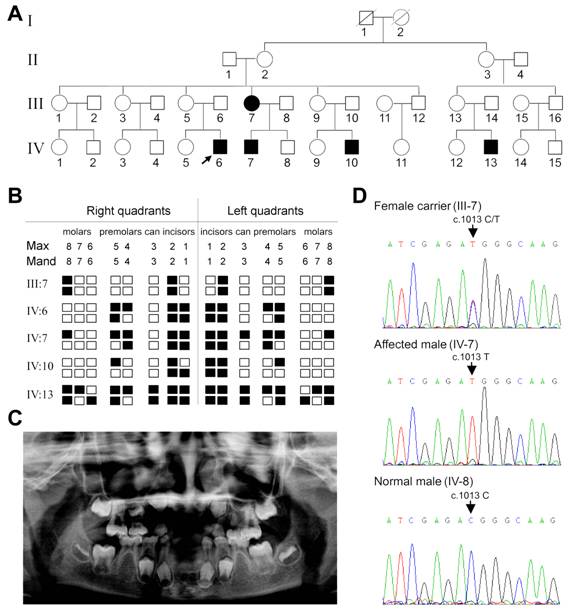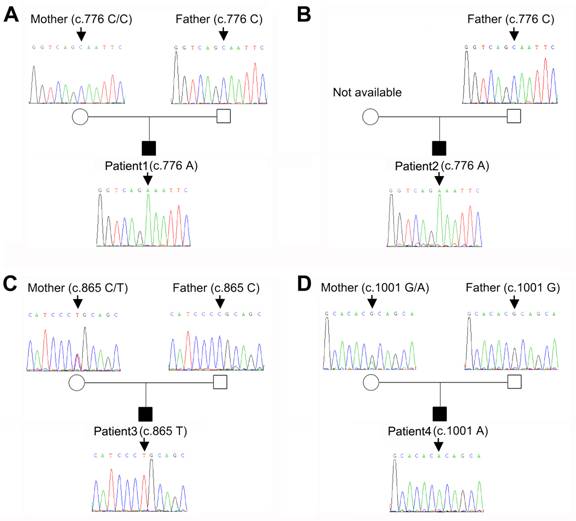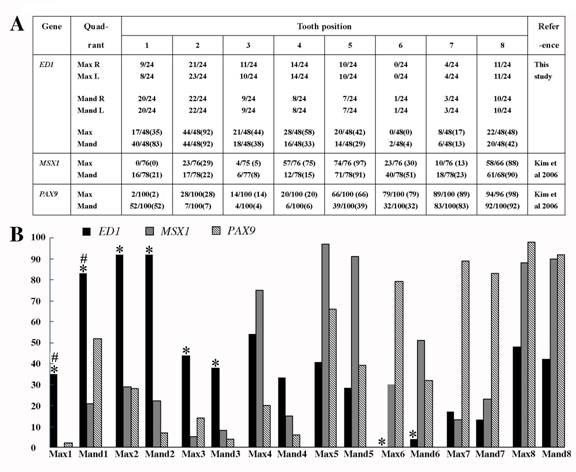ABSTRACT: 0993
Genetic defect of ED1 gene underlies non-syndromic hypodontia/ oligodontia
| D. HAN1, S. SONG2, Y. GONG1, X. ZHANG1, H. WU1, X. WANG2, M. YAN2, N. ZHONG3, and H. FENG1, 1Peking University School of Stomatology, Beijing, China, 2Peking University Health Science Center;Peking University Health Science Center, Beijing, China, 3New York State Institute for Basic Research in Developmental Disabilities, USA |
Objectives: Recent studies showed that mutations in ED1 gene, which has been previously identified as causing X-linked hypohidrotic ectodermal dysplasia, were detected in two families with X-linked non-syndromic hypodontia. Notably, all affected males in these families exhibited isolated oligodontia, while almost all of the female carriers showed normal or milder phenotype. We hypothesized that ED1 gene could be responsible for sporadic non-syndromic oligodontia in male patients besides X-linked familial hypodontia. Methods: We obtained DNA samples from an X-linked family and 15 unrelated male patients with apparently sporadic non-syndromic oligodontia. Screening of ED1 gene was performed by direct sequencing of the entire coding region. Results: A novel ED1 mutation (Thr338Met) was identified in the X-linked family (Fig. 1).Three novel mutations of Ala259Glu, Arg289Cys, and Arg334His were identified in 4 out of 15 sporadic male patients (Fig. 2). We compiled the number of the missing tooth of patients with defined ED1 mutations. The most likely absence of teeth were maxillary and mandibular lateral incisors (92%) and mandibular central incisors (83%) (Fig. 3A). We compared the data with recently reported data obtained from the patients with MSX1 and PAX9 mutations (Fig. 3A), and performed chi-square tests. Statistically significant differences (p<0.001) were observed at 8 positions (Fig. 3B). Conclusion: Our results confirm that ED1 mutation is responsible for X-linked hypodontia, and indicate that germline ED1 mutations frequently underlie sporadic non-syndromic oligodontia in male patients. It also provides the evidence that ED1-associated hypodontia has specific pattern of tooth agenesis, which was congenital absence of maxillary and mandibular central incisors, lateral incisors and canines, while the maxillary and mandibular first molars are always retained. This work was supported by Chinese Ministry of Education 985 Project (985-2-035-39), Chinese Ministry of Education 211 Project and Natural Science Foundation of Beijing (7063099).
|
| Seq #147 - Microbiology and Immunology 9:00 AM-10:30 AM, Saturday, April 5, 2008 Hilton Anatole Hotel Metropolitan Ballroom |
|
Back to the Microbiology / Immunology and Infection Control Program |
©Copyright 2008 American Association for Dental Research. All Rights Reserved.


